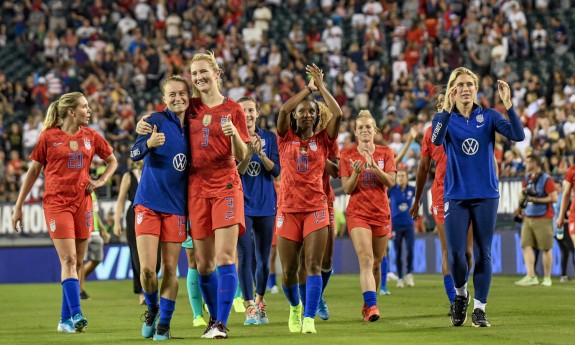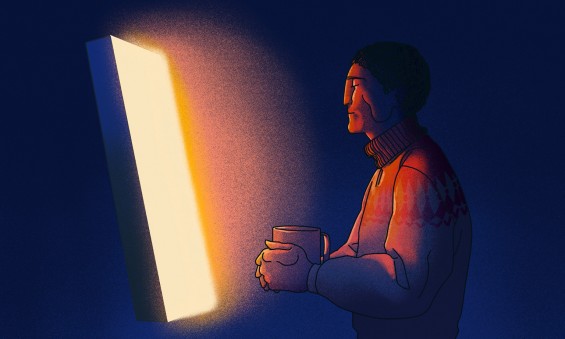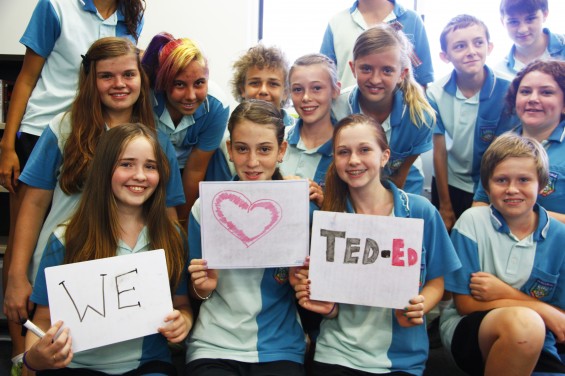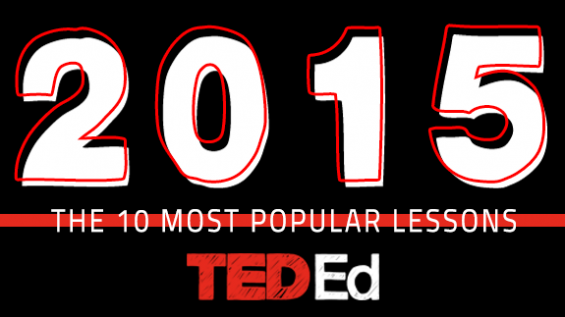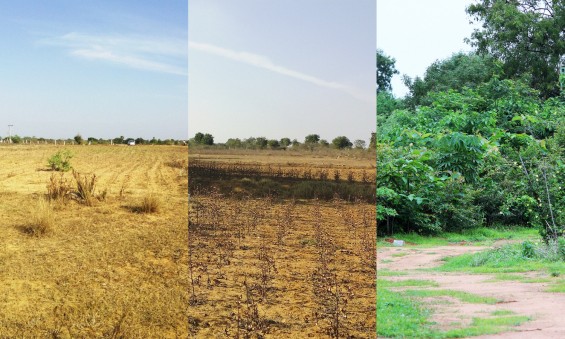
Sports are designed around men — and that needs to change
From tennis to swimming and soccer, female athletes are at the top of their game right now, but they are still not receiving the support that men do.
Despite accumulating international titles, the US women’s national soccer team are currently having to pursue a gender discrimination lawsuit for equal pay (above, a photo of them from August 2019). In advance of the trial, their governing body, U.S. Soccer, has filed court documents declaring them less skilled than their male counterparts.
But the problem isn’t just that the gender pay gap also exists in sport — even the average woman just wanting to have enough energy to hit the gym regularly is at a disadvantage. The underlying research that makes good nutrition and effective training possible has also all been done on men, says exercise physiologist and nutrition scientist Stacy Sims in her TEDxTauranga Talk. “[During my early research I was told] ‘women are an anomaly, so we don’t necessarily study women in sport nutrition or exercise science’… I looked around and I thought surely with 50 percent or more of the population being female, aren’t the men the anomaly and they don’t know it yet?”
New Zealand-based Sims is on a mission to get the sporting world to recognize that “women aren’t just small men” but have their own set of nutritional and physiological needs.
While everyone’s body is different, there are patterns in physiology that are particular to most women and deeply impact their training. One of these is the menstrual cycle. Sims is frustrated that this isn’t addressed enough in sport and training. “This is one of the reasons girls drop out of sport, because no one talks about it… and wait til you get to perimenopause and menopause; it’s like tumbleweeds.” She has also seen clients in her own practice who have felt it was normal and “easier” for their periods to disappear during intense training.
While some studies have suggested that it can be useful to plan strength training around your menstrual cycle, and that you may even be more at risk of injury in particular stages of your cycle, we are still lacking a large and robust body of research to tailor training and competition around a fundamental aspect of many top athletes’ physiology.
In nutrition, too, Sims says that studies on high intensity interval training, the ketogenic diet and paleo intermittent fasting are all done on (often sedentary) men, then generalized over to the entire fitness population. “If we look at how women have been marginalized [in this process], they’re just assuming that this information is going to work for them as well.”
This mindset is also letting women down when it comes to something as fundamental as equipment, says Lynn Le. She’s the founder of women’s boxing gear and sportswear brand Society Nine (named after the Title IX legislation that made gender discrimination in sport illegal).
A former kickboxing instructor, Le founded the Portland, Oregon company in 2013 after struggling for years with combat sports equipment that hadn’t been designed for women. Clients would show up to her classes wearing children’s boxing gloves, or “some brand’s version of a pink glove, and they almost always didn’t fit the wrist and feel supportive. The material felt super chintzy; it just had no realm of seriousness at all in either fit or quality, and I realised I didn’t really have a place to direct them.”
Le herself had resorted to doubling up on the hand wraps usually used by combat fighters, so she could force her hand into a fist inside men’s gloves that were too big. As women’s hands are narrower than men’s, Le knew that a dedicated design was necessary not just for comfort but for basic safety.
“[In combat sport] your first line of defense is creating that shock absorption through the power of your own body, which is compressing your hand into as close of a perfectly formed fist as you can. If you’re wearing a glove that’s two sizes too big, how on earth can you possibly do that?… You want to enjoy what you’re doing, and to enjoy what you’re doing, you want to wear things that are comfortable, support you and help you prevent injury.”
Le and her development team also came up against the severe lack of research on women’s physiology when they were trying to design shin guards. There were no studies on how to make a suitable fit for women, despite women having a much more variable sizing from the knee down than men do. “We had to go back to high school biology and really try to understand the human body… Women’s bodies are incredible and complicated. They’re way more different in variability than men’s bodies. That’s the number one thing I’ve learned.”
But for Le, founding Society Nine was about more than solving an equipment problem. “The industry wasn’t really interested in representing all self identifying women, from their products to their stories. If they did, they did it in such a way that it tokenized individual women singularly rather than as a collective. So many brands… only talk about being the one, being the champion, being the winner, and that is not a recipe for longevity.”
Her own experience with combat sports changed her life, and created a community for her when she was going through a difficult period. Now she sees an outpouring of the same stories from her customers.
Le’s aim is to make it known that this community exists far beyond what is regularly shown in advertising, and it is welcoming. “Why we train, whether for fitness or competitively, goes so much deeper than glory or attention.” Society Nine works hard to make sure that whenever the company uses the term “women” that it’s defined as “self-identified women”, and it continues to expand its sizing and representation.
The industry is even more alienating for trans women and intersex athletes, who face not only a lack of representation but a serious dearth of research, with debates and disagreements at the highest level about how and whether they can compete.
In terms of what the future looks like, it’s still an uphill battle. Even now, as a professor at the University of Waikato and having held a research position at Stanford, Sims gets asked why it’s important to study women when “we don’t know enough about men.”
She recently published ROAR, a nutrition and fitness guide for women, and she wants to see more women realising the full and unique potential of their bodies. “We can really work with our physiology to improve our health outcomes, to improve our performance. Whether that be walking up the mountain, running a fast 5k, or winning Ironman. Whatever your goal is.”
For Le, the aim is to keep serving her community and to keep having challenging conversations. Though she received a strong welcome when the company started, some of the push back she encountered in the early days still remains. Like sports pro shop retailers telling her that women don’t really come to their store. “Maybe they don’t come into your store because there’s actually no women’s product. There’s no reason for them to enter if they are shown blatantly that they aren’t served or thought about.”
Society Nine also continues to donate equipment to combat sports programs for women and young people across the country. “I want to keep on helping self-identified women and other underrepresented people. I want them to feel seen … What motivates me isn’t just making really beautiful stuff that works. It’s also telling these women’s stories.”
Watch Stacy Sims’s TEDxTauranga Talk now:
ABOUT THE AUTHOR
Mary Halton is Assistant Ideas Editor at TED, and a science journalist based in the Pacific Northwest.
This piece was adapted for TED-Ed from this Ideas article.
